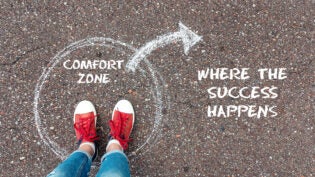
We are defined by our choices. Do we put in the time to perfect this product? Do we go the extra mile with our customer service? Do we build and maintain strong relationships with partners, vendors, and others we’re doing business with?
But what about things that are getting in the way, structures that are limiting you? They might be concepts that work great in another situation, but are they really appropriate or ideal for what you want to do? In an op-ed in the New York Times, Matthew May listed just a handful of businesses that have subtracted things we’ve come to expect—and made it work. Toyota’s Scion unit eschewed advertising and reduced the number of standard features. First Direct operates its banking business without branches. WL Gore got rid of job titles.
In his article, May tells the story of working on a project and feeling completely stuck, unable to know what to do. It was only when he realized that his problem was doing too many things instead of too few that he was able to focus his efforts and get it done.
There is always “one more thing” that we could do. But just because we can do something doesn’t mean that we should do it. Does that “one more thing” distract from the central focus of what you’re trying to accomplish? Does it dilute the brand? Does it not match up with everything else you’re doing? Then it might be time to focus on doing less, instead of more. Sometimes you really can add by subtraction.
You have to look critically at what you’re doing and prioritize the most important things, the things that are working and contributing toward your primary goal. It doesn’t matter whether something seems important or if it’s something that everybody else is doing or has always done. You have to be willing to reinvent yourself every day and refocus your efforts. Don’t do something just out of habit or because it’s always been done. Do it because it works.
2841 Views












